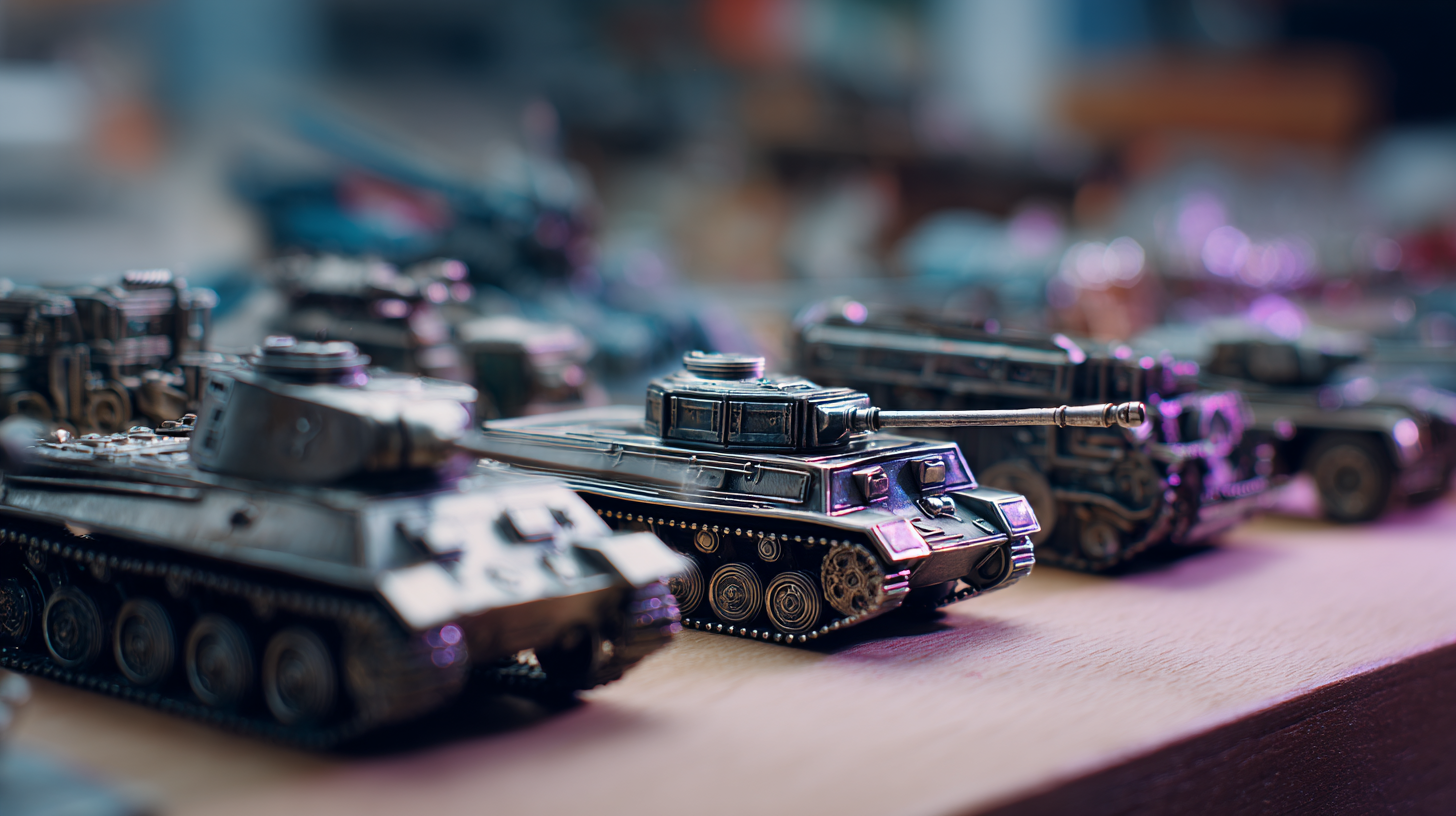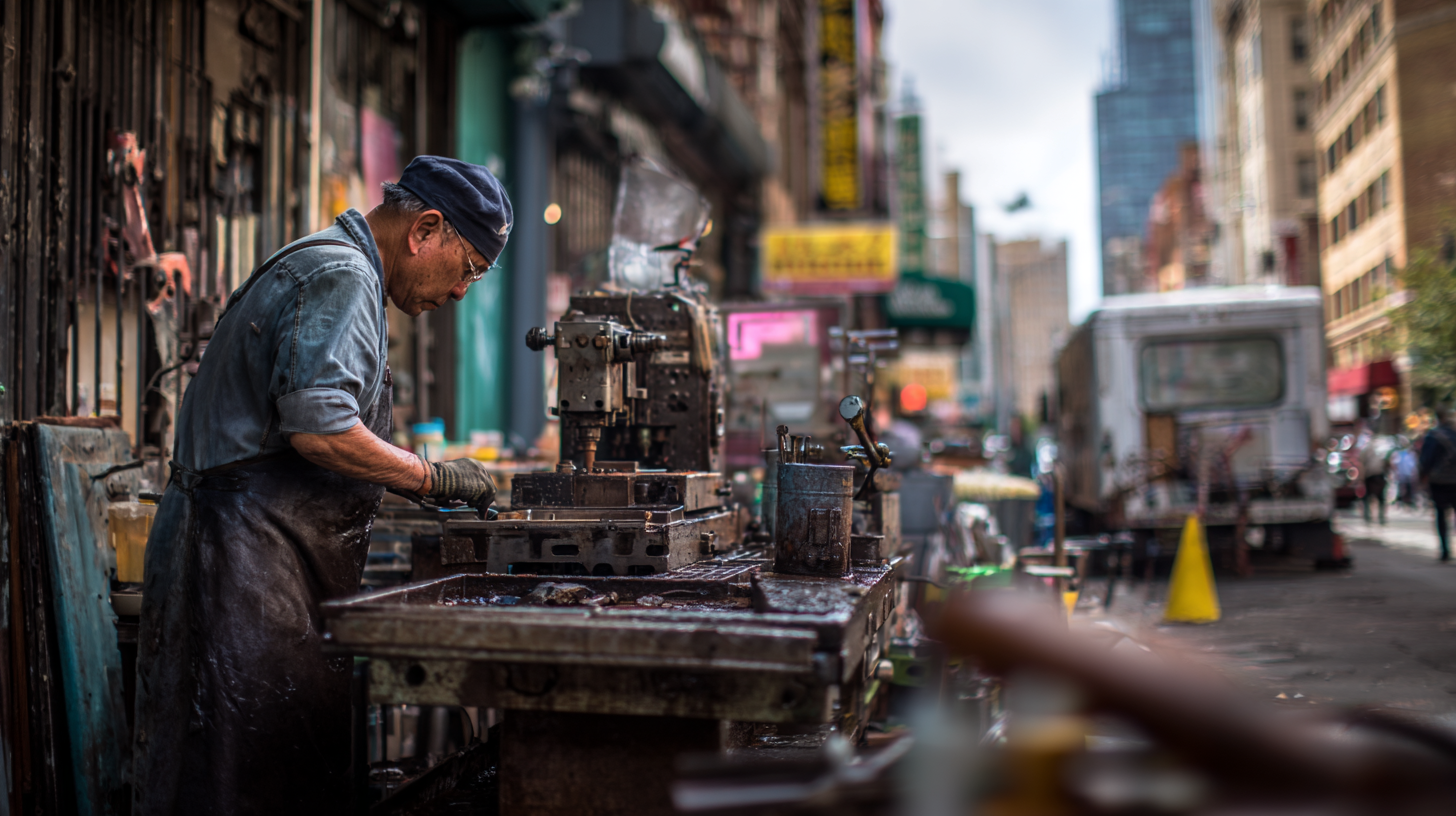How to Choose the Best Die Cast Die for Your Manufacturing Needs
When selecting the best die cast die for your manufacturing needs, it's crucial to understand the significant role this component plays in achieving high-quality production. According to a recent industry report by Grand View Research, the global die casting market was valued at approximately $68 billion in 2020, with expectations to grow at a CAGR of 5.4% from 2021 to 2028. This growth underscores the increasing demand for precision-engineered components that die cast dies facilitate. The right die cast die not only enhances productivity but also improves product integrity and reduces manufacturing costs. As manufacturers face rising competition and the constant push for efficiency, understanding the benefits of various die cast die types becomes imperative in making informed decisions that align with business objectives and operational capabilities.

Key Factors to Consider When Choosing Die Cast Dies for Manufacturing
When selecting the best die cast die for manufacturing, several key factors must be considered to ensure optimal efficiency and product quality. One of the primary considerations is the material composition of the die itself, as it significantly influences the die's durability and thermal conductivity. According to a report by Smithers Pira, using high-grade steel with a hardness rating of 50-60 HRC can enhance the die's life cycle by up to 30%, ultimately reducing downtime and maintenance costs.
Another critical factor is the design complexity of the die, which directly impacts production rates and the intricacies of the casted components. A study from the American Foundry Society highlights that incorporating advanced simulation software can reduce trial and error during die design. This integration can lead to a 15% increase in production speed by ensuring that the die performs optimally from the outset. Additionally, it is crucial to evaluate the cost-effectiveness of the die design in relation to the expected production volume, as dies with a longer lifespan can provide significant savings in high-volume manufacturing scenarios.
Selecting the right die cast die requires a balance of material selection, design complexity, and cost analysis. Manufacturers must carefully assess these factors to align die performance with production objectives, thereby maximizing their overall manufacturing efficiency.
Understanding the Different Types of Die Casting Processes and Their Applications
Die casting is a critical manufacturing process that uses molten metal to create complex shapes and components with high precision. Understanding the different types of die casting processes is essential for selecting the right method for your specific needs. The most common types include low-pressure die casting, high-pressure die casting, and permanent mold casting. Each method offers distinct advantages and is suitable for various applications.
Low-pressure die casting is ideal for producing large, intricate parts and offers superior surface finish and dimensional accuracy. This process is often used in the automotive and aerospace industries for components like engine blocks or housing parts. On the other hand, high-pressure die casting is best for high-volume production of smaller, less complex parts, commonly utilized in consumer electronics and appliances. Permanent mold casting, while less common, allows for the reuse of molds, making it cost-effective for lower volume production runs and items that require high thermal conductivity, such as heat sinks. By understanding these processes, manufacturers can better meet their production goals and enhance the performance of their products.
How to Choose the Best Die Cast Die for Your Manufacturing Needs
| Die Casting Process | Material Used | Applications | Advantages | Disadvantages |
|---|---|---|---|---|
| High Pressure Die Casting | Aluminum, Zinc, Magnesium | Automotive parts, Aerospace components | High precision, Excellent surface finish | High initial tooling cost |
| Low Pressure Die Casting | Aluminum, Copper | Large components, Heavy machinery parts | Good mechanical properties, Low porosity | Slower cycle times |
| Die Casting with Inserts | Aluminum, Plastics | Electrical housings, Complex geometries | Combination of materials, Enhanced features | More complex setup |
| Gravity Die Casting | Aluminum, Cast Iron | Artistic components, Machinery frames | Cost-effective for large parts | Lower precision compared to high pressure |
Analyzing Material Selection: Which Alloys Work Best for Your Die Cast Needs?
When selecting the ideal die cast die for manufacturing needs, the choice of material is crucial. One prevalent choice is the Al–Si–Cu alloy, particularly ADC12. Research indicates that ADC12 serves not only as a robust die-casting material but also as a phase change material for medium to high-temperature heat storage. This versatility makes it a prime candidate when efficiency is a priority. Studies have shown that using ADC12 in applications with temperature ranges typical of steam systems can enhance energy management and thermal efficiency.
Tips for selecting the right alloy include considering the alloy's mechanical properties and its suitability for the intended thermal application. The deformation susceptibility of other alloys, like CuMg with high magnesium content, suggests that they are excellent for cold metal working and can provide superior strength due to solid-solution hardening. This highlights the need for careful material selection based on application-specific requirements.
Additionally, advancements in processes such as low-pressure die casting (LPDC) for aluminum alloys, like AlSi7Mg0.3, have been extensively studied to optimize component production. Evaluating factors like the manufacturing process and the physical properties of the alloy can significantly impact the final product's performance, making a knowledgeable approach to material selection vital in achieving desired manufacturing results.

Evaluating Die Life Expectancy: Maximizing Efficiency and Cost-Effectiveness
When evaluating die life expectancy in die casting, one of the critical factors to consider is the material composition of the die itself. According to industry reports, high-speed steel (HSS) and hardened tool steel are among the most commonly used materials due to their excellent durability and heat resistance. Recent studies have shown that maintaining an optimal die temperature can extend the life expectancy of a die by as much as 50%. This is crucial because as the die wears, the cost of production increases due to the need for more frequent replacements and repairs.
Another significant factor is the design of the die, which directly impacts its efficiency and lifespan. Data from the Die Casting Association indicates that well-designed dies can improve cooling efficiency and minimize thermal fatigue, thereby enhancing die longevity. Implementing advanced simulation technologies during the design phase can reduce die wear by up to 30%, allowing manufacturers to achieve better cost-effectiveness. Additionally, regular maintenance and monitoring of die conditions can lead to proactive adjustments, further maximizing die life and ensuring that production remains efficient and cost-effective over time.

Industry Insights: Trends and Innovations in Die Casting Technology for 2023
The die casting industry is experiencing significant innovations in 2023, reflecting a shift towards more efficient and sustainable manufacturing processes. With advancements in technology, manufacturers are now able to produce parts with enhanced precision and lower operational costs. Key trends include the rise of automation in die casting operations, enabling quicker turnaround times and higher output rates. Additionally, the integration of smart technologies and artificial intelligence is improving quality control measures, resulting in fewer defects and greater overall product reliability.
When selecting a die cast die, consider the material and design of the die to ensure it aligns with the specific needs of your project. Investing in a die that can withstand high temperatures and pressures will enhance durability and performance. Furthermore, opting for a die with interchangeable inserts can provide flexibility and reduce costs in the long run, allowing for multiple designs without the need for entirely new equipment.
Lastly, keeping abreast of these innovations can inform your decision-making. By understanding the latest trends in die casting technology, you can choose a die that not only meets your manufacturing requirements but also supports efficiency and sustainability. Engage with industry professionals and attend conferences to stay updated on best practices and emerging technologies.
Trends in Die Casting Technology for 2023
Copyright © 2025 · All Rights Reserved · Franchino Mold & Engineering
